Characteristic Analysis of the Extreme Precipitation over South China During the Dragon-Boat Precipitation in 2022
Abstract
1. Introduction
2. Data and Methods
3. Characteristics of the Spatial and Temporal Distribution of Precipitation During the “Dragon-Boat Precipitation”
3.1. Spatial Distribution of Precipitation During the “Dragon-Boat Precipitation”
3.2. Temporal Evolution of Precipitation During the “Dragon-Boat Precipitation”
4. Analysis of Background Field Characteristics
4.1. Circulation Pattern
4.2. Moisture Transport
5. Case Analysis
5.1. Precipitation Distribution
5.2. Analysis of Weather Patterns and Precipitation Conditions
5.2.1. Synoptic Field
5.2.2. Water Vapor
5.2.3. Vertical Motion
6. Conclusions
Author Contributions
Funding
Institutional Review Board Statement
Informed Consent Statement
Data Availability Statement
Acknowledgments
Conflicts of Interest
References
- Wu, H.; Li, C.; Wang, D. Abnormal characteristics and causes of Dragon-Boat Precipitation in Guangdong over the past 55 years. J. Trop. Meteorol. 2017, 33, 608–616. (In Chinese) [Google Scholar]
- Wu, H.; Guo, Y.; Wu, Y. Climatic characteristics and changes of Dragon-Boat Precipitation in South China over the past 62 years. J. Heavy Rain Disasters 2024, 43, 84–92. (In Chinese) [Google Scholar]
- Qin, W.; He, L.; Cai, Y.; Liao, X. Research progress on Dragon-Boat Precipitation heavy rainfall in South China over the past 30 years. Meteorol. Res. Appl. 2023, 44, 1–6. (In Chinese) [Google Scholar]
- Miao, C.; Wu, Z.; He, J.; Chi, Y. The anomalous features of the northeast cold vortex during the first flood period in the last 50 years and its correlation with rainfall in South China. Chin. J. Atmos. Sci. 2006, 30, 1249. (In Chinese) [Google Scholar]
- Wu, H.Y.; Wu, Y.; Zheng, J. The relationship between the extreme dragon-boat Precipitation and atmospheric circulation and SST anomaly in South China in 2022. Trans. Atmos. Sci. 2024, 47, 450–459. (In Chinese) [Google Scholar] [CrossRef]
- Su, Q.; Lu, R.; Li, C. Large-scale circulation anomalies associated with interannual variation in monthly rainfall over South China from May to August. Adv. Atmos. Sci. 2014, 31, 273–282. [Google Scholar] [CrossRef]
- Bao, Z. Advances in research on pre-flood season rainfall in South China. Acta Oceanol. Sin. 1986, 1, 31–40. (In Chinese) [Google Scholar]
- Liang, J.; Wu, S. Discussion on the causes of drought and flood during the flood season in Guangdong Province and the influencing factors in the earlier period. J. Trop. Meteorol. 2001, 17, 97–108. (In Chinese) [Google Scholar]
- Wang, Y.; Gao, J.; Chi, Y.; Tang, Z.; Chen, S. Statistical characteristics of persistent heavy rainfall during the first rainy season in South China under the background of Pacific sea temperature fields on different time scales. Trans. Atmos. Sci. 2015, 38, 126–431. (In Chinese) [Google Scholar]
- Zhao, Y.; Wang, Y. Overview of the study on the pre-flood season heavy rainfall in South China during the past 30 years. Rainstorm Disaster 2009, 28, 193–202+228. (In Chinese) [Google Scholar]
- Jin, D.; Guan, Z.; Huo, L.; Wang, X. Possible impacts of spring sea surface temperature anomalies over South Indian Ocean on summer rainfall in Guangdong-Guangxi region of China. Clim. Dyn. 2017, 49, 3075–3090. [Google Scholar] [CrossRef]
- Papalexiou, S.M.; Montanari, A. Global and regional increase of precipitation extremes under global warming. Water Resour. Res. 2019, 55, 4901–4914. [Google Scholar] [CrossRef]
- Hu, Y.; Du, Y.; Luo, X. Precipitation classification of “Dragon-Boat Precipitation” in South China during the past 49 years. Meteorology 2013, 39, 1031–1041. (In Chinese) [Google Scholar] [CrossRef]
- Ze, C.; Zou, X.; Cholaw, B.; Yuan, G.; Jun, J.; Sheng, L. Spatiotemporal Characteristics of Extreme Pecipitation in the lndochina Peninsula and South China. Chin. J. Atmos. Sci. 2023, 47, 957–974. (In Chinese) [Google Scholar] [CrossRef]
- Lee, M.H.; Ho, C.H.; Kim, J.H. Influence of tropical cyclone landfalls on spatiotemporal variations in typhoon season rainfall over South China. Adv. Atmos. Sci. 2010, 27, 443–454. [Google Scholar] [CrossRef]
- Gimeno, L.; Nieto, R.; Vázquez, M.; Lavers, D.A. Atmospheric rivers: A mini-review. Front. Earth Sci. 2014, 2, 2. [Google Scholar] [CrossRef]
- Simmonds, I.; Bi, D.; Hope, P. Atmospheric water vapor flux and its association with rainfall overchina in summer. J. Clim. 1999, 12, 1353–1367. [Google Scholar] [CrossRef]
- Zhou, T.J.; Yu, R.C. Atmospheric water vapor transport associated with typical anomalous summer rainfall patterns in China. J. Geophys. Res. Atmos. 2005, 110, D08104. [Google Scholar] [CrossRef]
- Wang, Z.; Xu, J.; Zeng, Z.; Ke, M.; Feng, X. Understanding the 2022 extreme dragon-boat rainfall in South China from the combined land and oceanic forcing. Asia-Pac. J. Atmos. Sci. 2024, 60, 1–14. [Google Scholar] [CrossRef]
- Yao, S.; Huang, Q.; Zhao, C. Variation characteristics of rainfall in the pre-flood season of South China and its correlation with sea surface temperature of Pacific. Atmosphere 2015, 7, 5. [Google Scholar] [CrossRef]
- Gimeno-Sotelo, L.; Gimeno, L. Where does the link between atmospheric moisture transport and extreme precipitation matter? Weather Clim. Extrem. 2023, 39, 100536. [Google Scholar] [CrossRef]
- Zhou, X.; Ding, Y.; Wang, P. Moisture transport in the Asian summer monsoon region and its relationship with summer precipitation in China. Acta Meteorol. Sin. 2010, 24, 31–42. [Google Scholar]
- Sheng, B.; Wang, H.; Li, H.; Wu, K.; Li, Q. Thermodynamic and dynamic effects of anomalous dragon boat water over South China in 2022. Weather. Clim. Extrem. 2023, 40, 100560. [Google Scholar] [CrossRef]
- Deng, W.-J.; Ren, P.-F.; Zhang, D.; Sun, Y.; Wu, N.-G. An extreme monsoonal heavy rainfall event over inland South China in June 2022: A synoptic causes analysis. J. Trop. Meteorol. 2023, 29, 16–25. [Google Scholar]
- Cheng, J.; Zhao, Y.; Zhi, R.; Feng, G. Meridional circulation dominates the record-breaking “Dragon Boat Water” rainfall over south China in 2022. Front. Earth Sci. 2023, 10, 1032313. [Google Scholar] [CrossRef]
- Liu, B.; Zhu, C.; Xu, K.; Ma, S.; Lu, M.; Han, X.; Hua, L. Record-breaking pre-flood rainfall over South China in 2022: Role of historic warming over the Northeast Pacific and Maritime Continent. Clim. Dyn. 2023, 61, 3147–3163. [Google Scholar] [CrossRef]
- Dong, S.-R.; Yang, S.; Liu, W.; Hu, Y.-M.; Wang, M.-S.; Liu, Y. Analysis of Precipitation Anomaly and a Failed Prediction During the Dragon-boat Rain Period in 2022. J. Trop. Meteorol. 2023, 29, 115–127. [Google Scholar]
- Huffman, G.J.; Stocker, E.F.; Bolvin, D.T.; Nelkin, E.J.; Tan, J. GPM IMERG Final Precipitation L3 Half Hourly 0.1 Degree x 0.1 Degree V07 Dataset; Goddard Earth Sciences Data and Information Services Center (GES DISC): Greenbelt, MD, USA, 2023. [Google Scholar] [CrossRef]
- Huffman, G.J.; Adler, R.F.; Behrangi, A.; Bolvin, D.T.; Nelkin, E.J.; Gu, G.; Ehsani, M.R. The new version 3.2 global precipitation climatology project (GPCP) monthly and daily precipitation products. J. Clim. 2023, 36, 7635–7655. [Google Scholar] [CrossRef]
- Qiu, J.; Luo, Y.; Wu, C.; Gao, Y.; Yu, S. Macro-and microphysical characteristics of extreme hourly precipitation over the pearl river Delta on the monsoon coast (south China). J. Geophys. Res. Atmos. 2024, 129, e2023JD039929. [Google Scholar] [CrossRef]
- Hersbach, H.; Bell, B.; Berrisford, P.; Hirahara, S.; Horányi, A.; Muñoz-Sabater, J.; Nicolas, J.; Peubey, C.; Radu, R.; Schepers, D.; et al. The ERA5 global reanalysis. Q. J. R. Meteorol. Soc. 2020, 146, 1999–2049. [Google Scholar] [CrossRef]
- Wang, J.; Yang, S.; Wei, Z.; Hu, Y. Changes in characteristics of Dragon-Boat Precipitation in Guangdong under global warming. Guangdong Meteorol. 2018, 40, 4–8. (In Chinese) [Google Scholar]

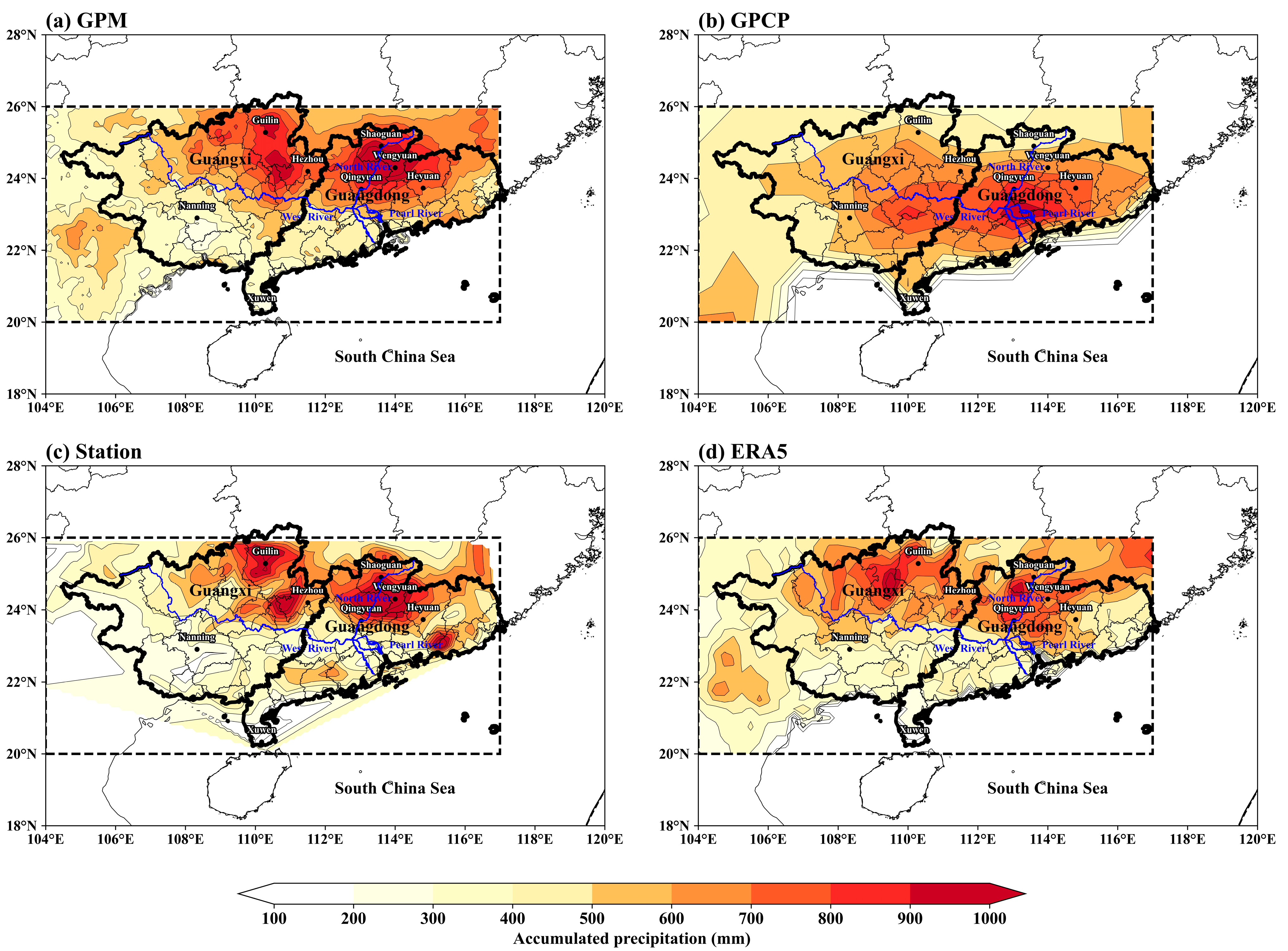
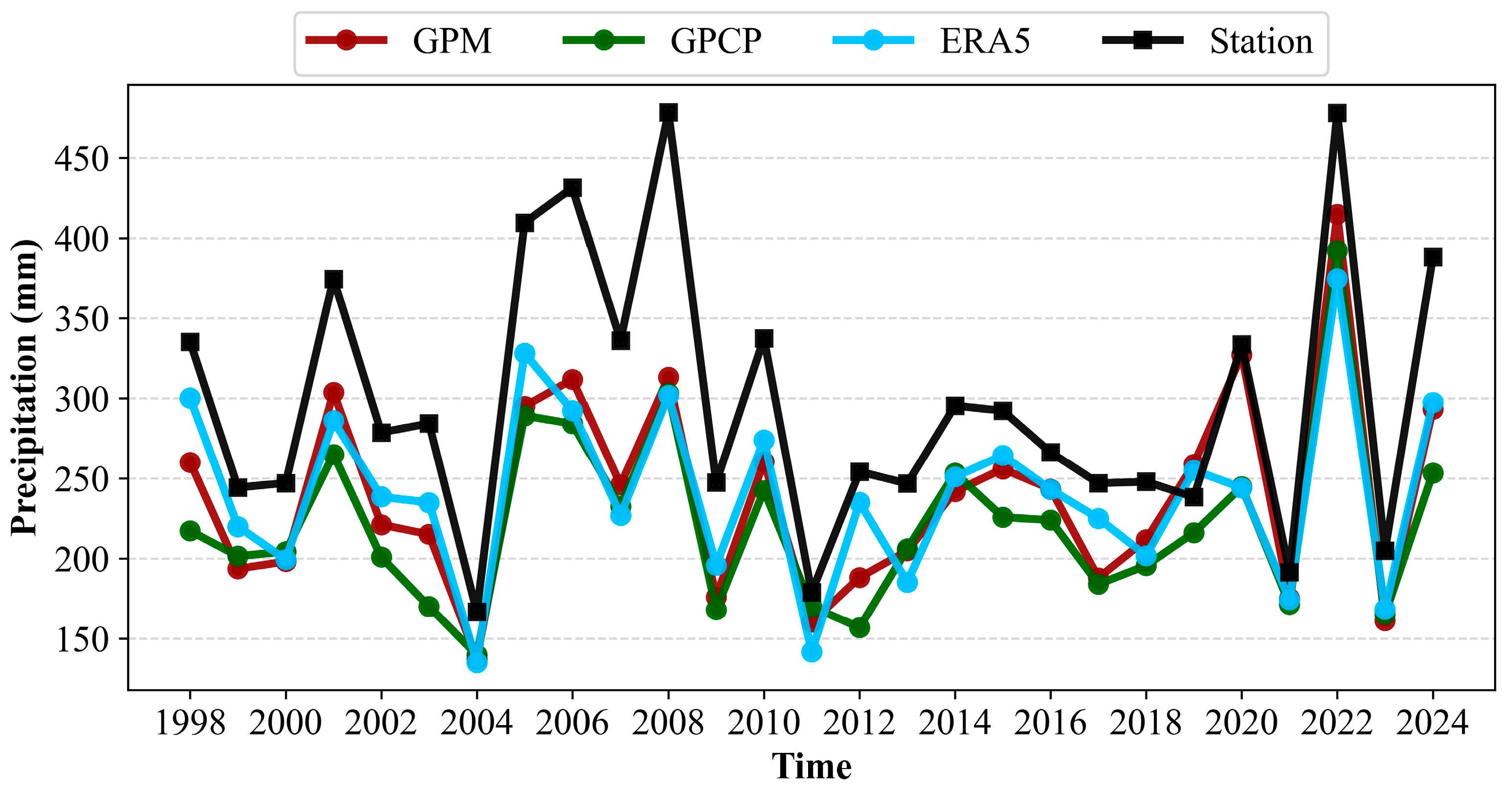

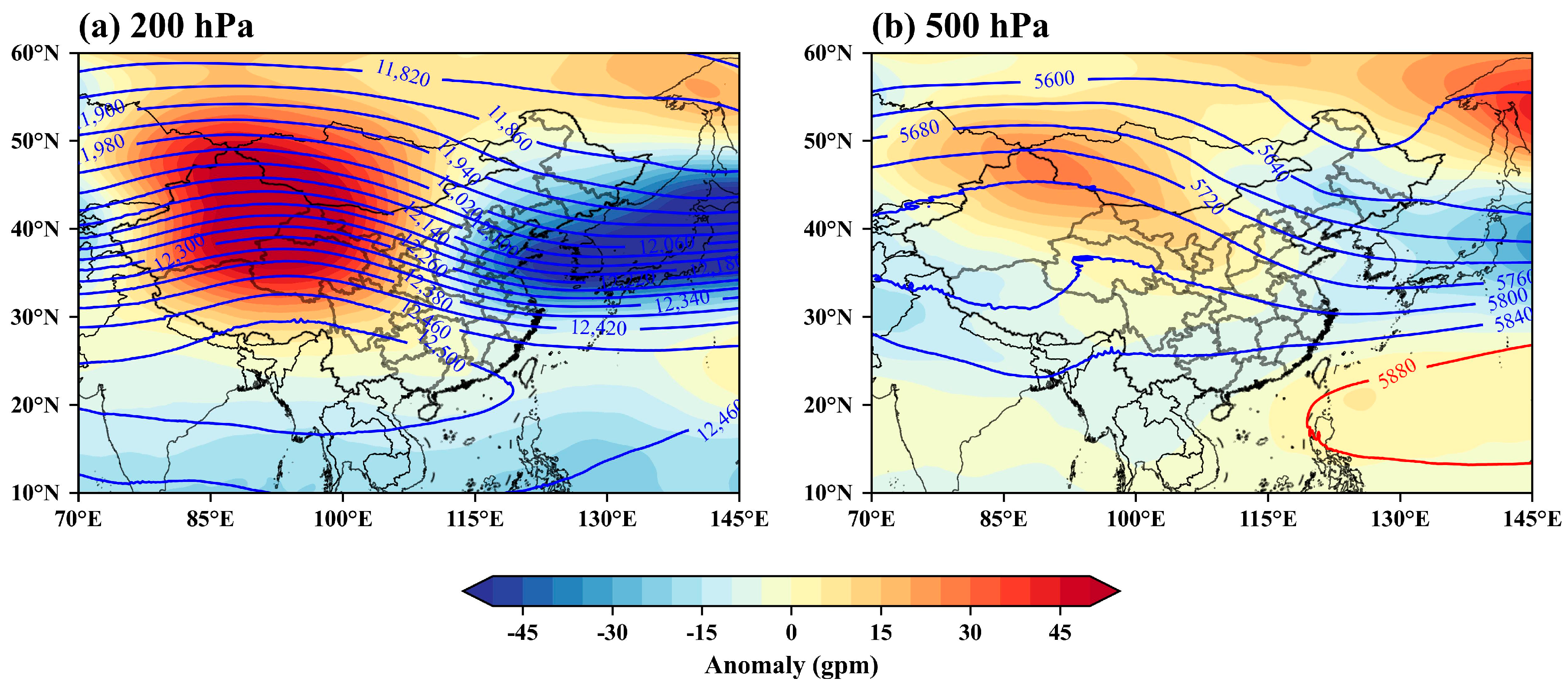


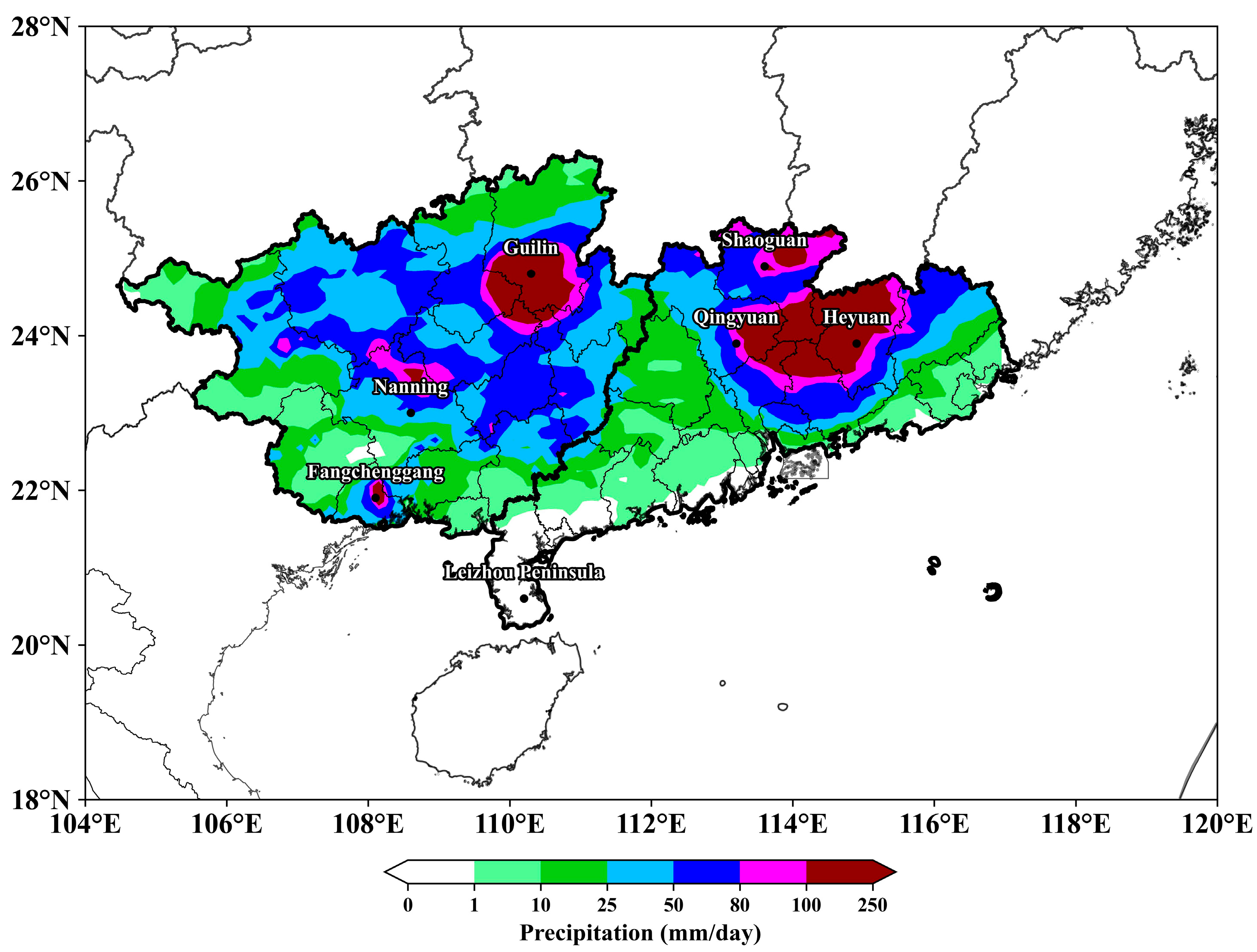
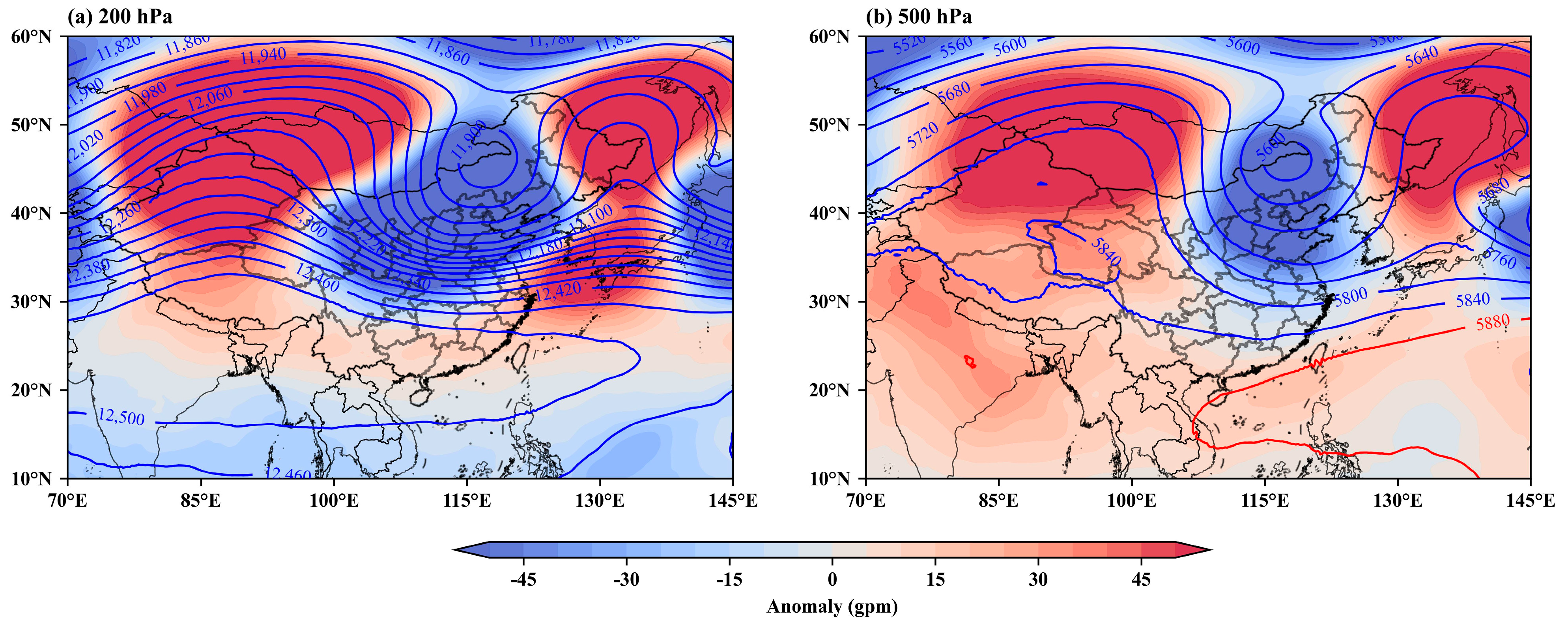
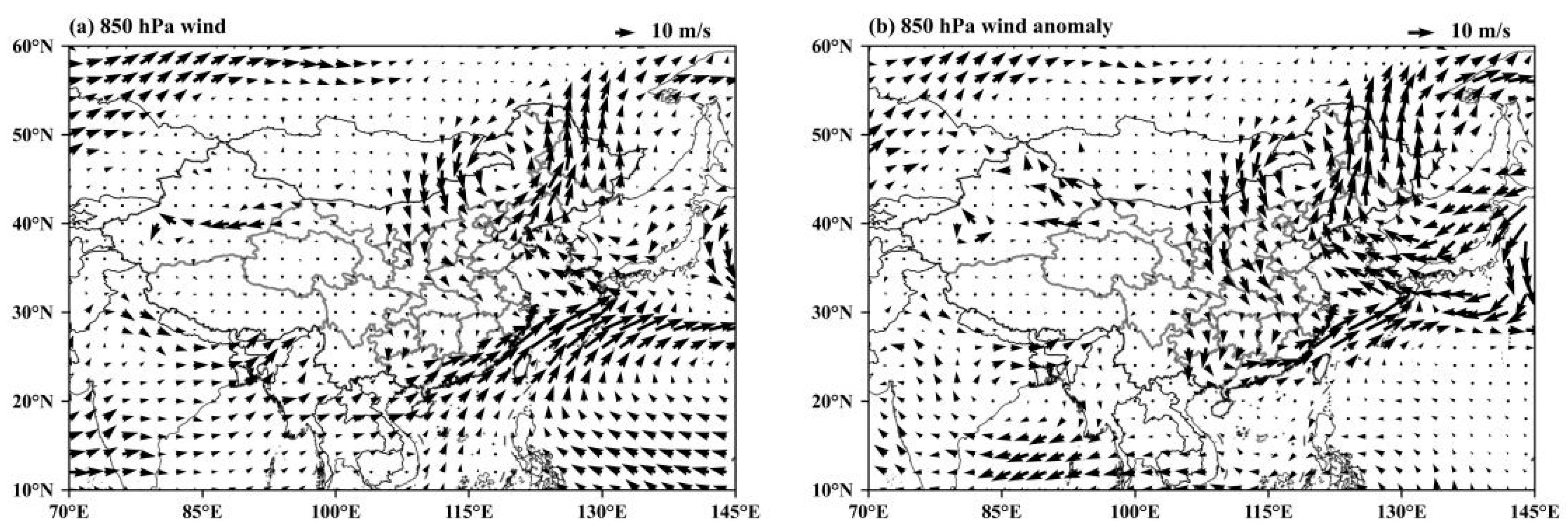


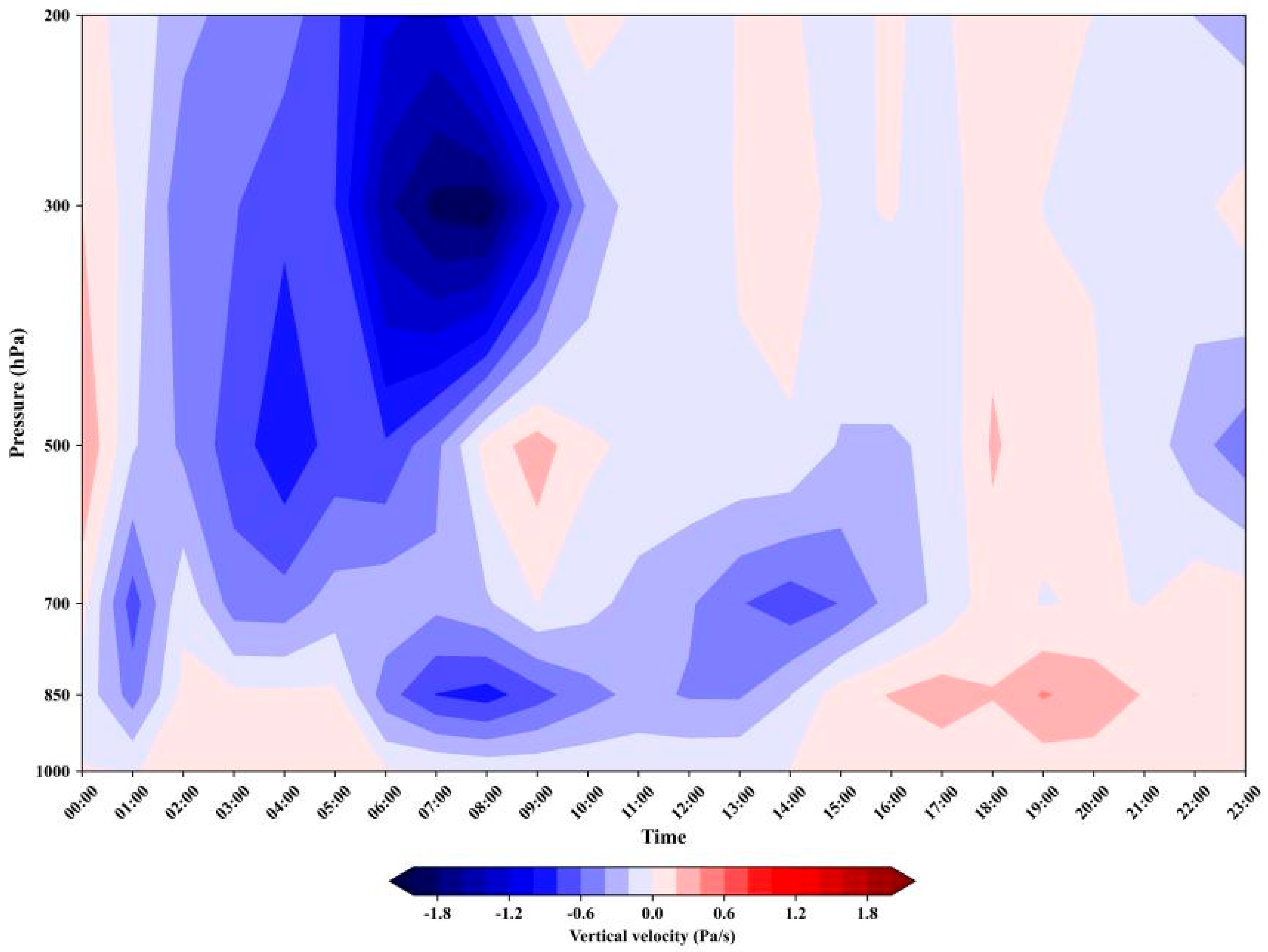
Disclaimer/Publisher’s Note: The statements, opinions and data contained in all publications are solely those of the individual author(s) and contributor(s) and not of MDPI and/or the editor(s). MDPI and/or the editor(s) disclaim responsibility for any injury to people or property resulting from any ideas, methods, instructions or products referred to in the content. |
© 2025 by the authors. Licensee MDPI, Basel, Switzerland. This article is an open access article distributed under the terms and conditions of the Creative Commons Attribution (CC BY) license (https://creativecommons.org/licenses/by/4.0/).
Share and Cite
Chen, M.; Xue, Y.; Qiu, J.; Liu, C.; Zhang, S.; Xu, J.; Zhu, Z. Characteristic Analysis of the Extreme Precipitation over South China During the Dragon-Boat Precipitation in 2022. Atmosphere 2025, 16, 619. https://doi.org/10.3390/atmos16050619
Chen M, Xue Y, Qiu J, Liu C, Zhang S, Xu J, Zhu Z. Characteristic Analysis of the Extreme Precipitation over South China During the Dragon-Boat Precipitation in 2022. Atmosphere. 2025; 16(5):619. https://doi.org/10.3390/atmos16050619
Chicago/Turabian StyleChen, Meixia, Yufeng Xue, Juliao Qiu, Chunlei Liu, Shuqin Zhang, Jianjun Xu, and Ziye Zhu. 2025. "Characteristic Analysis of the Extreme Precipitation over South China During the Dragon-Boat Precipitation in 2022" Atmosphere 16, no. 5: 619. https://doi.org/10.3390/atmos16050619
APA StyleChen, M., Xue, Y., Qiu, J., Liu, C., Zhang, S., Xu, J., & Zhu, Z. (2025). Characteristic Analysis of the Extreme Precipitation over South China During the Dragon-Boat Precipitation in 2022. Atmosphere, 16(5), 619. https://doi.org/10.3390/atmos16050619







